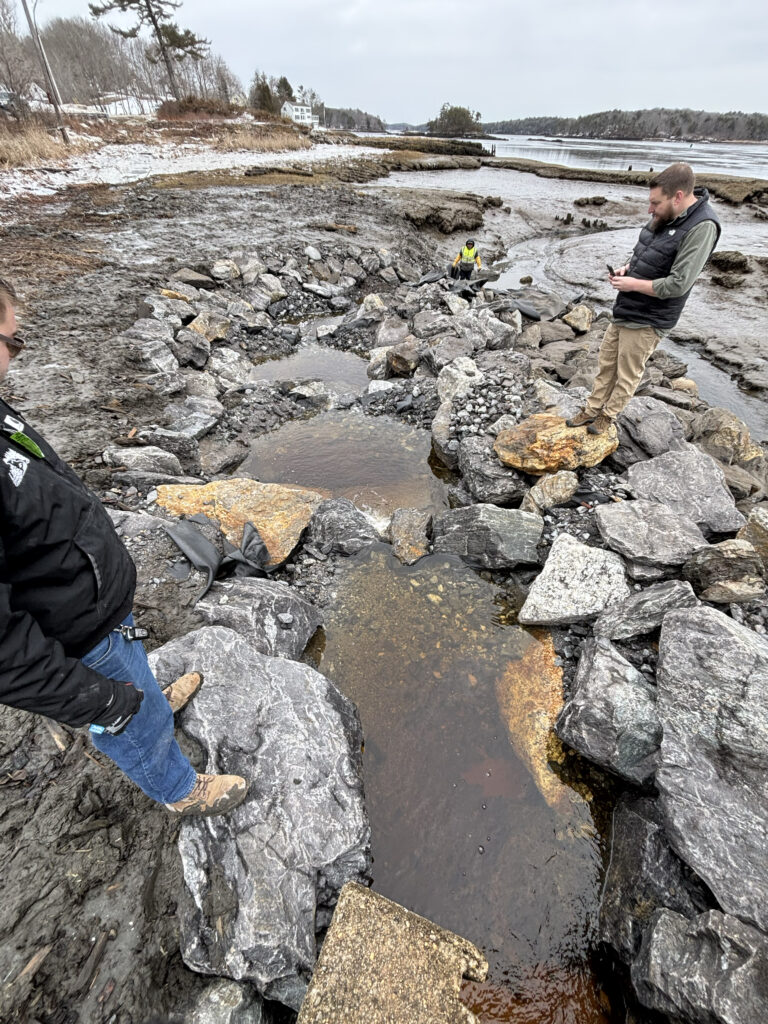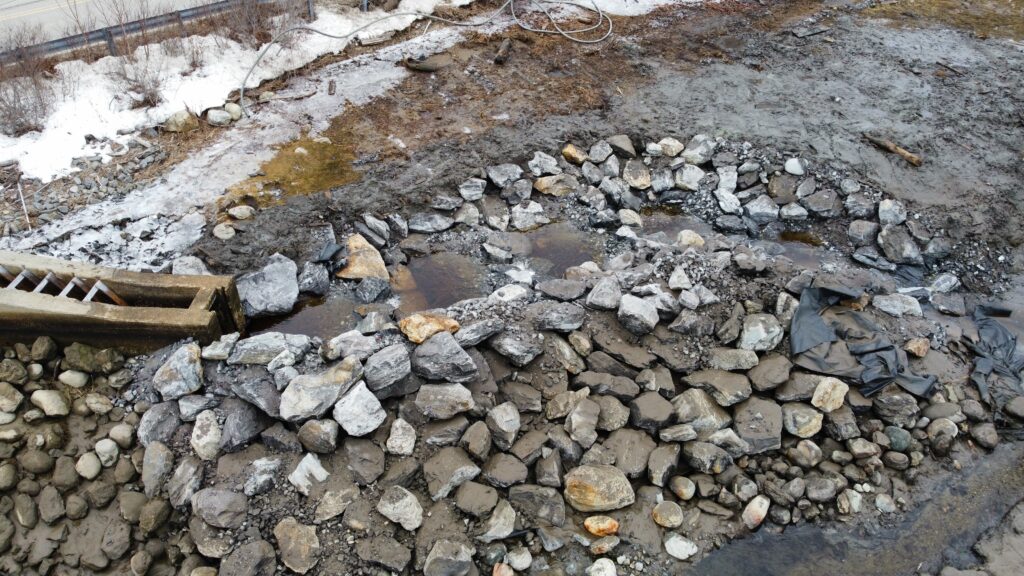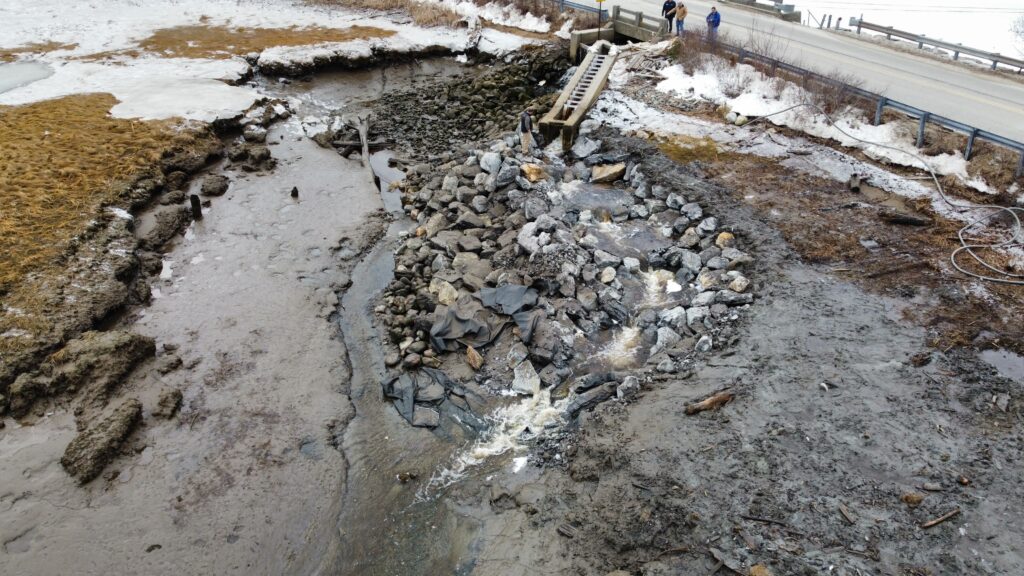Case Study
Nestled off Parker Head Road in Phippsburg, Maine, Center Pond is more than just a serene coastal landscape—it’s a crucial habitat in the life cycle of migratory fish. The concrete fish ladder that once supported their seasonal journeys had become a barrier rather than a bridge. Only accessible at high tide, the structure resulted in dangerously high mortality rates and blocked access to upstream spawning grounds. The ecological consequences were significant, threatening not just marine life, but also the wider environmental and economic systems that rely on a thriving fish population.

This wasn’t just a maintenance project — it was a long-overdue ecological intervention. The existing concrete fish ladder had limited functionality.
While discussions around improving fish passage began as early as 2015, aligning stakeholders — including environmental agencies, engineers, and funding partners — took years of collaboration. The need was clear: restore reliable, year-round access for migrating fish, reduce ecological stress, and help ensure the long-term health of the watershed.
As experts in coastal and environmental construction, Linkel Construction was brought on to deliver a resilient and environmentally sound solution. Our first step was a site walk with Acadia Civil Works — the project’s engineers— to evaluate the conditions and align on the construction approach.
The plan: create a series of strategically placed weirs to form a stepped channel accessible at all tidal stages. Our team laid a stable base using crushed rock and geotextile fabric directly on the muddy flats. On top, we constructed riprap weirs with protective liners that would guide fish safely through the passage—regardless of tide level. The design not only restored fish access but added long-term durability against storms.


Environmental sensitivity was a guiding principle throughout the build. Each phase of the project—from mobilization to final rock placement—was planned to minimize disruption to local ecosystems and the surrounding community. We prioritized low-impact equipment use, protected adjacent habitats, and worked closely with regulators to ensure compliance with all environmental standards.
The final product isn’t just a rebuilt fish ladder—it’s a revitalized passageway for migratory species, a strengthened piece of coastal infrastructure, and a model for ecological restoration in vulnerable tidal zones. The local community now enjoys enhanced environmental stability and the long-term benefits of a healthier fish population—boosting everything from biodiversity to local economies.
For fishermen, it means stronger future fish stocks. For marine biologists, it’s a measurable success in habitat restoration and species resilience. This project is a win for science, sustainability, and the working waterfront alike.

Linkel Construction brings unmatched experience in tackling complex, coastal construction challenges with an environmental focus. We don’t just build—we restore, preserve, and protect.
If your municipality or organization is facing coastal infrastructure challenges, let’s talk. We’re ready to bring resilient, sustainable solutions to the shoreline.